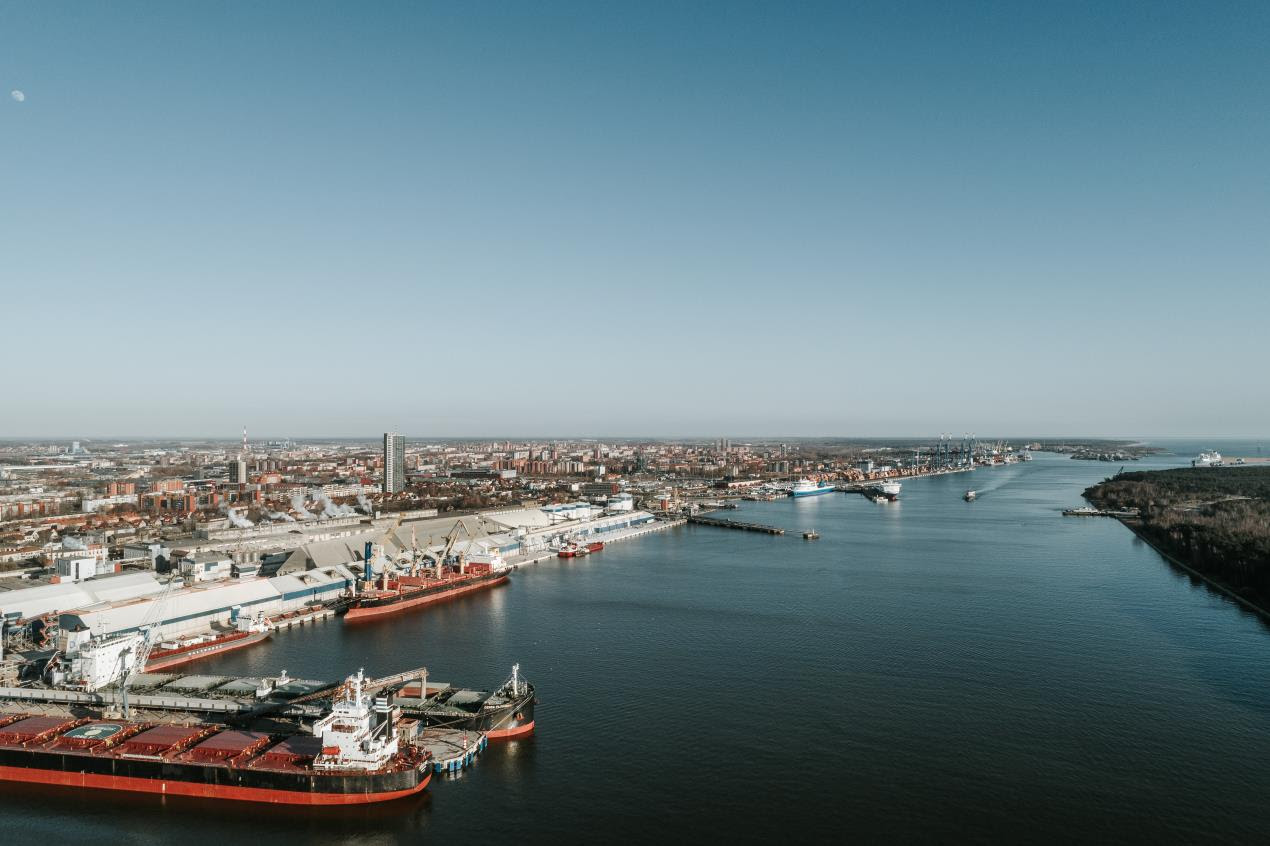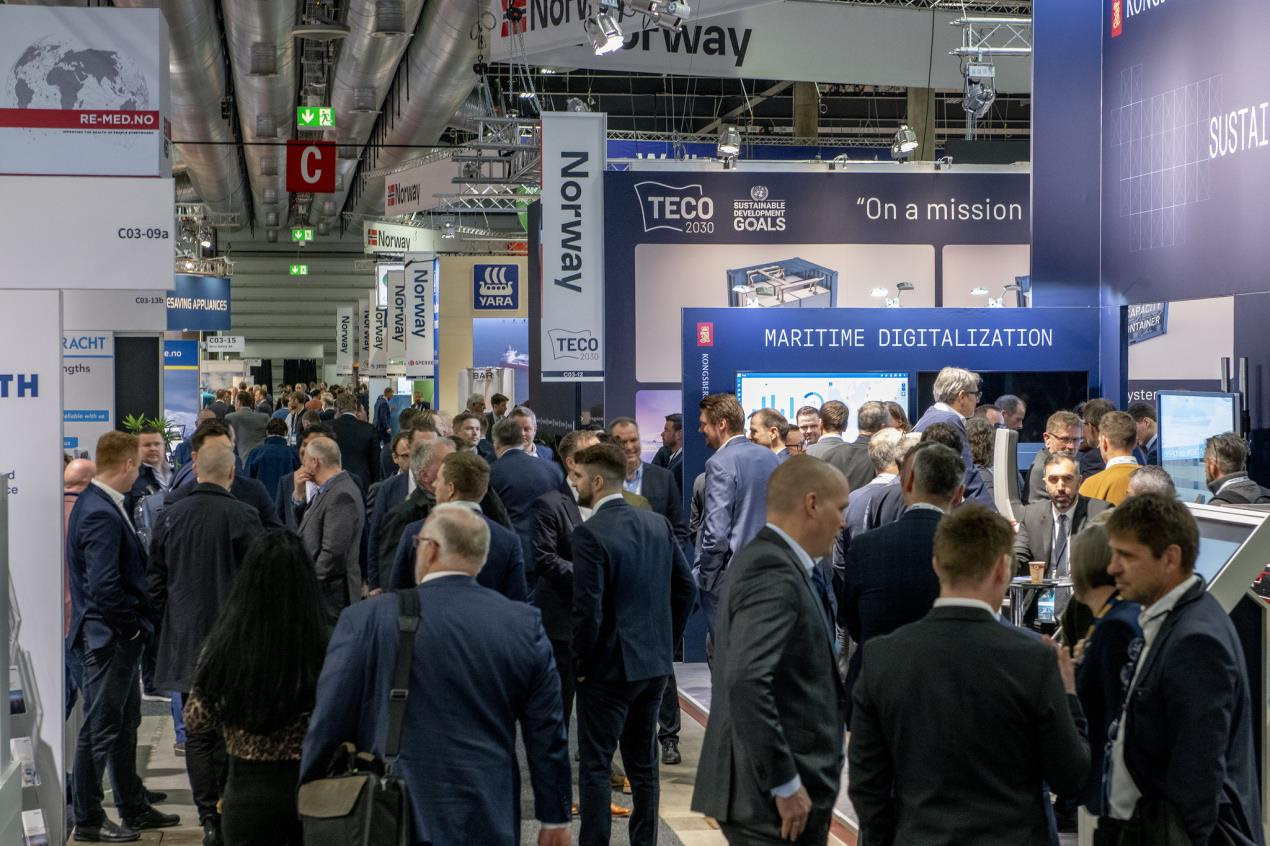Maritime satellite communications services provider Inmarsat held the final instalment of the 2015 Smart Operations event series in Copenhagen in late 2015.
The event’s conference, chaired by Dr Søren Hansen, Assistant Director of Vessel Performance ABS, beheld much discussion around prominent topics ranging from the impact of big data and its profit generating potential to the future of maritime satellite communications.
The reality of setting up ICT infrastructures and using software systems was debated with insight presented from multiple ship operators. The autonomous cargo ship and its future in the industry also graced the agenda.
In this week’s spotlight, Fathom Maritime Intelligence reviews the core pillars of discussion and debate around the connected ship, big data and the autonomous ship that took place at the Smart Operations: Copenhagen conference.
The Industry Is On A Long Communications Journey, But It Has Only Just Begun
Drew Brandy, Senior Vice President, Market Strategy, Inmarsat Maritime gave delegates insight into Inmarsat’s visions for the industry’s communications journey, reflecting particularly on the fact that demand for greater connectivity is increasing, regardless of some perceptions that communications is a cost. For Brandy, satellite communications is an essential enabler for meeting this growing demand for connectivity at sea and should be seen as a value, not a cost. This statement comes with good reason, according to Brandy, satellite communications can help save 10% on vessel expenses through reducing fuel costs and emissions; optimising mechanical performance; reducing repair costs; reducing port charges; and improving crew morale.
With satellite communications representing just 0.3% of a typical vessel’s running costs, against 46% for fuel, Brandy clarified why increasing numbers of shipping operators are investing in broadband satellite services to have better control of vessel efficiency and drive down costs, especially when there is 10% savings on vessel expenses on offer.
To support the industry in enabling such savings, Inmarsat this year rolled out their next generation high-speed broadband network, Global Xpress, and will soon announce the availability Fleet Xpress service, that will support the maritime industry’s communications requirements now and into the future with seamless, high-speed global connectivity.
One thing is certain, demand for connectivity is driving technological innovation in the industry and innovation is also rife in the realms of satellite communications equipment development. Manufacturer of maritime satellite communications equipment, Cobham SATCOM’s Director of Maritime Broadband, Jens Ewerling described to Smart operations delegates how satellite communications technology is at the forefront of innovation and developments in order to cater for the growing global maritime market.
The Crew Must Be Connected In A Future-Proofed Ship
According to an industry survey that Inmarsat’s recently conducted, 70% of crew surveyed considered communications to be an influencer in vessel selection. This is staggering static that shipping companies should take note of as it proves that connectivity will impact the hiring of crew going forward. Brandy also described how this same survey had revealed the current status quo of crew connectivity access on board, stating that only 36% of crew surveyed had internet access which means 74% of crew surveyed did not have access to the internet on board and even more shocking was the statistic that merely 18% of crew surveyed had access to ‘free’ internet.
Big Data Is Not A Trend, It Is Business
For Inmarsat, big data is not just a fad. Drew Brandy described how this trend is permeating through all aspects of business and the maritime industry is no different.
According to their recent industry survey, the internet is not saturating the shipping industry as much as it is in other aspects of society.
When drawing comparison between the penetration of internet on-board vessels to the penetration of land-based internet, shipping would be ranked just above Africa, and would be second to last globally.
However, as big data becomes part of the industry’s day-to-day business, the saturation of internet access across the global fleet will grow exponentially.
Data Can Translate To Direct Profit
Captain Jan Wilhelmsson, Director, Commercial Shipping, Eniram implored delegates to think about how data can translate into direct profit. For Wilhelmsson there are two main areas through which data can generate direct profit; data can produce visibility that can reduce waste and data can improve optimisation leading to increased profit margins.
Despite the potential profits on offer, Wilhelmsson described meetings that he had undertaken with various anonymised carriers and their perception of what new technology can do for them. One perception was that “our business is too complex to automate. There are too many factors, so it’s not worth it”. Also, the development of in-house software ranked highly in the meetings that Wilhelmsson described, and more shockingly some carriers stated that “We don’t care about 3% in fuel saving”.
He also reported to delegates that organisation silos lacking links between spending budgets and benefits are a main barrier that hinders successful implementation of modern data driven systems and processes.
Ulf Siwe, MONALISA 2.0 Communications Officer, Swedish Maritime Administration described the benefits that data application is bringing for sea traffic management, a real example of data application through route optimisation, just-in-time port arrivals and shorter turnaround times. Again, all areas that can increase profit margins thanks to the application of big data.
Data Application Will Change The Industry As We Know It
For Jan Erik Hårvei, CEO of leading Norwegian software company Tero Marine, the industry’s future looks extremely exciting, but he warned delegates that things are going to change. He cautioned that those who don’t change when the environment changes will perish and disappear. It’s a matter of simple evolution.
In line with this statement, Hårvei described how cloud computing, big data and the industry becoming connected is driving stakeholders in the industry to find their roles, convinced that this process will change the way that we live and exist and live forever.
When it comes to the role of the software provider in this evolutionary process, Hårvei sees them as enablers. He reflected upon the fact that the flow of information in the future will be immense and mind boggling. However, software providers can enable the processing and analysis of data and promote transparency.
Steen Sander Jacobsen, Head of Cost Leadership, Maersk Tankers gave insight into the mind of ship owners and operators and their perspective on data application. His key message to delegates was that you cannot manage what you don’t measure.
Maersk’s practice, according to Jacobsen is “connect – monitor – analyse – predict – optimise”
He flagged a few important points to delegates from Maersk’s data application journey, including; it is important to celebrate the outliers and poor data as they offer an opportunity for improvement; data is an extra sense rather than a replacement of the human brain; operators should start by showing the potential, implement and then prove it. This last point is the most powerful, said Jacobsen.
The Industry Is In A Transformative ICT Arena
The role of ICT in the shipping industry is driving great transformation according to Ericsson’s ICT Douglas Watson, Director Shipping, Ericsson have pioneered solutions for utilising big data in other industries, especially their connected vehicle cloud. Watson went on to describe Ericsson’s new ICT platform for the maritime industry, noting that the whole maritime ecosystem is changing – the industry is in a transformative ICT arena.
Walter Hannemann, Head of Systems, Technical Division, TORM presented key aspects of what they have encountered when setting up their ICT infrastructure. A key point that Hannemann raised was that owners and operators should not leave anything as an afterthought when it comes to ICT infrastructure design and architecture. He advised: do not retrofit your design, include IT security from the start and also disaster recovery.
For Hannemann, change management is essential as crew may use new tools and software incorrectly, so training is a vital part of ICT infrastructure roll out and operation.
Jan Erik Hårvei also stressed that when it comes to ICT and software, a user-friendly interface is essential, stating that Tero Marine’s TM Master solution was developed under the company’s strong philosophy of“Usability Is Key”. He enforced the message that that integration between systems and system families is an extremely important aspect to take into consideration so as to tie everything together.
The Autonomous Vessel: When…. Not If
Rolls Royce’s bold statements around the future of the autonomous vessel are industry-renowned and always provoke fruitful discussion and contrasting points of deliberation. This event was no different: when Rolls Royce’s VP of Innovation, Oskar Levander took to the podium, debate was stirred and the room divided. Levander shared not only Rolls Royce’s visions for the future and their progressions in developing automated, remote technologies and services but also reinforced the company’s claims that the autonomous ship will become a reality.
Levander communicated to delegates that the industry is witnessing the dawn of the Ship Intelligence era. He also stated that this will be the most disruptive change we will see in the industry for some time.
A pertinent point that Levander also touched upon is the fact that ship intelligence and the autonomous ship are not about the final destination, but rather about the journey and the development areas that emerge through aggressive application of technology. Disruption is a catalyst for innovation.
He questioned “what is ship intelligence?”For Rolls Royce it is all about vessel optimisation. And the factors of this optimisation include remote control/operation, decision support, navigation and positioning, condition management, on-board automation and operations optimisation. The landscape of shipping is changing to smart shipping with real time data and automated data gathering, he stated.
When approaching the topic of the autonomous ship, for Levander it is a case of“not IF, but WHEN”. Drawing reference to autonomous application and modes of transport already existing today, for example unmanned planes, self-driving cars like the Google car, he exclaimed that marine is only following today’s trend!
The technical side of creating technologies that require minimal maintenance is the challenging reality of autonomous ships, said Levander. Machinery needs to be made so reliable that it requires minimal maintenance. Towards this end, Levander believes that a different approach needs to be taken and ship machinery and ships in general be made more reliable.
For many, regulation is considered to be a major roadblock in the path of the autonomous ship.
To overcome this, Rolls Royce’s strategy is to take small pioneering steps in the right direction. Detailing their roadmap to the autonomous ship, Levander described how they will start locally, with some ships whose operations start in one flag state jurisdiction, possibly a RoRo ferry or a tug. The next step would then be to apply this to coastal shipping and then onto an international vessel. Small steps from the status quo, towards autonomy and then onto unmanned are the core pillars of this roadmap.


































